Trucks, palm fruit and noodles
Our first attraction today was a complex called Banteay Srei. It is built from hard sandstone and in our guides opinion has some of the best preserved decorative carvings of any of the ruins.
It also demonstrated a couple of features that underline my comments in yesterdays entry about the vastness and complexity of the Angkor region.
It was a 20km 40 minute drive to Banteay Srei from town and almost in the opposite direction to the things we saw yesterday.
On the topic of complexity, take a look at picture 13 and note the band of angled stripes around the middle of the carving. They are depicting arrows. This one elborate carving depicts a well known, and quite lengthy, Hindu myth and underscores the reality that most of these carvings cannot be understood without substantial knowledge of the Hindu and Budist religions.
So we did not aim to understand the carvings, just marvel at them.
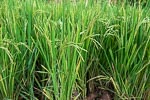
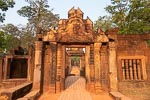
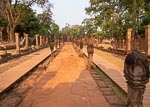
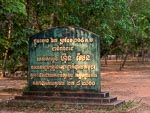
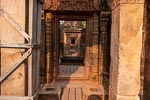
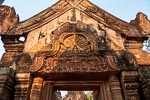
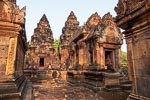
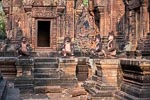
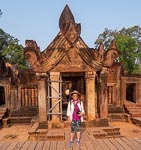
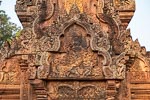
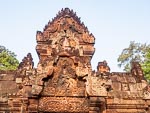
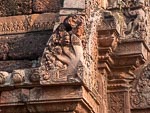
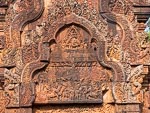
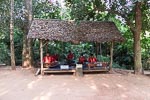
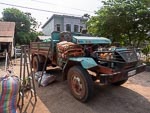
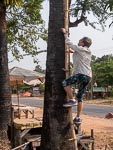
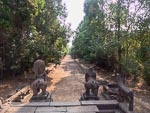
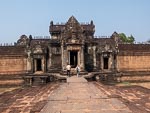
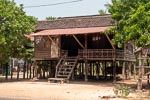
The day was not entirely about Hinduism, Budism and relics.
The very first photo, of the rice plants with almost mature rice grains at their ends was for our education. During this tip we have been learning about rice growing and have seen almost all of the stages. This rice is only a few days from harvesting.
Photo 14 is a sign we saw a number of times during the two days. These men represent a charitable organisation raising money for victims of land mines. Cambodia still has vast tracks of land infested with such mines.
Photo 15. I found this truck really interesting, no cab and no windshield. I discovered that the owner built this himself from parts (mostly Nissan).
Nina is climbing a ladder made by creatively trimming a bamboo pole. It is tied to a palm tree. Why ?. The locals collect juice from male palm flowers to make sugar and beer. They also collect female fruit from which they get large clear coloured seeds which are eaten as a fruit.
The final photo above. There is really no such thing as a typical house as building materials are too scarce and/or expensive for copy-cat building but has some common properties of a moderately well to do house. Lifted off the ground for better cooling, flood protection and work shelter during the wet season as well as extra storage.










The photos immediately above trace the manufacture of vermicelli style rice noodles.
The lady in the first photo is the "master chef" of this operation. She and her helpers/family make noodles for sale locally. At the time of this photo she has orders for approximately 200kg of noodles. That will start out as 100kg of rice and the whole manufacturing process will take 3 days as there are two separate steps that require an "over night" process. The tools and implements are primitive but effctive.
and here